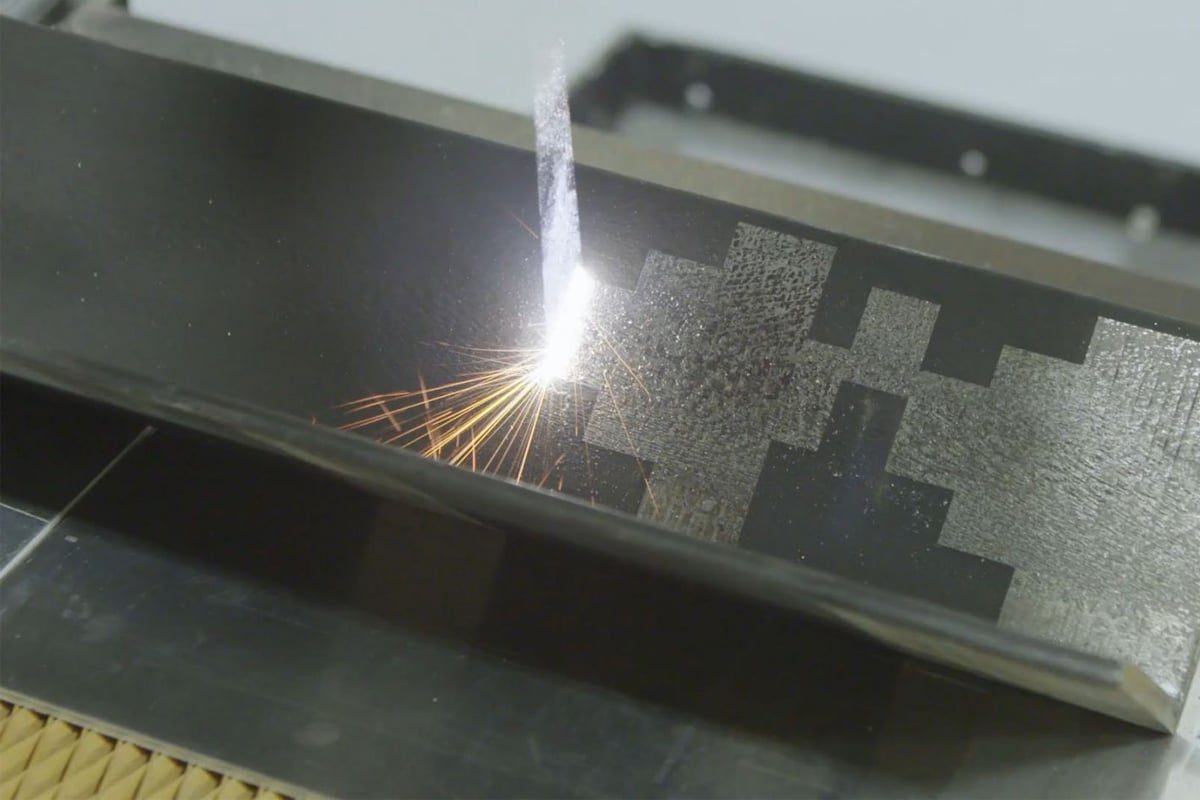
레이저 세척을 손상 없이 민감한 소재에 사용할 수 있을까?
혁신적인 기술로서 레이저 세척은 최근 몇 년 동안 널리 사용되었습니다. 고에너지 레이저 빔으로 대상 표면을 조사하여 표면 녹, 먼지, 산화물, 코팅 또는 기타 불순물을 정확하게 제거하여 효율적이고 환경 친화적인 세척을 달성합니다. 이 기술은 세척 프로세스의 정확성과 효율성을 향상시킬 뿐만 아니라 기존 방법으로 인한 폐기물과 화학 물질 사용을 줄입니다. 그러나 문화 유물, 전자 부품 또는 항공 우주 부품과 같이 특히 민감한 일부 재료의 경우 레이저 세척 기술의 적용은 신중하게 처리해야 합니다. 이러한 재료는 일반적으로 가치가 높거나 특정 물리적 및 화학적 특성을 가지고 있기 때문에 잠재적인 손상 위험이 주목의 초점이 되었습니다. 예를 들어, 고대 문화 유물은 레이저의 고에너지로 인해 표면 구조가 변경되거나 원래 질감이 손실될 수 있습니다. 전자 부품은 레이저의 열 효과로 인해 회로 성능이 저하될 수 있습니다. 항공 우주 부품은 레이저 세척 중에 발생할 수 있는 미세 균열에 특별한 주의를 기울여야 하며, 이는 재료의 전반적인 강도와 수명에 영향을 미칠 수 있습니다. 따라서 이러한 민감한 분야에 레이저 세척 기술을 적용할 때는 재료에 돌이킬 수 없는 손상이 발생하지 않도록 자세한 평가 및 조정을 수행해야 합니다. 이 글에서는 이러한 민감한 분야에서 레이저 세척 기술의 적용 가능성을 심층적으로 살펴보고 재료에 상당한 손상을 입힐지 분석합니다.
목차
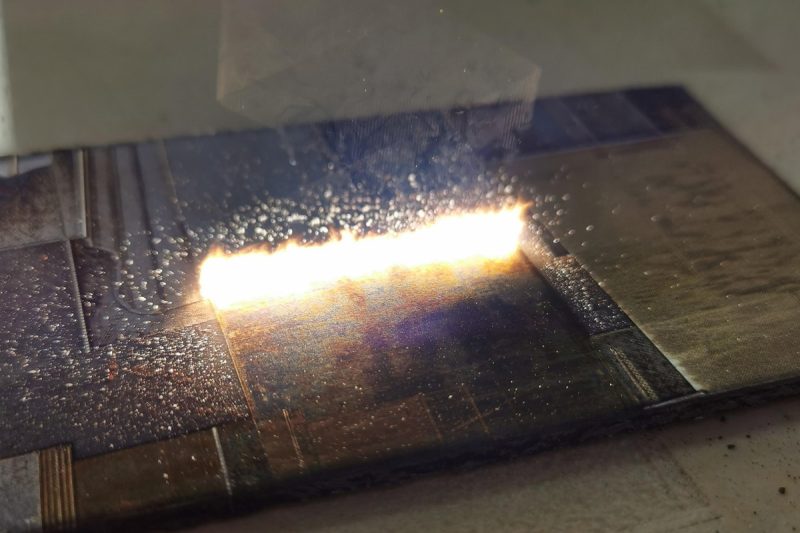
레이저 세척 기술에 대해 알아보세요
레이저 세척 기술은 고에너지 레이저 빔을 사용하여 물체 표면을 조사하여 먼지, 산화물, 기름 및 코팅과 같은 불순물을 제거하는 비접촉 세척 방법입니다. 최근 몇 년 동안 이 기술은 높은 효율성, 환경 보호 및 정밀성으로 인해 다양한 산업에서 점차 선호되는 세척 프로세스 중 하나가 되었습니다.
레이저 세척 작동 방식
레이저 세척의 핵심 원리는 고에너지 레이저 빔을 사용하여 물체 표면의 오염 물질이나 원치 않는 코팅과 상호 작용하는 것입니다. 레이저 에너지는 매우 작은 영역에 집중되어 오염 물질이 즉시 가열되거나 확장되거나 증발한 다음 제거됩니다. 세척 과정에서 레이저 에너지는 물체의 벌크 구조에 영향을 미치지 않고 오염 물질 층에 흡수될 수 있습니다. 이 프로세스는 주로 다음을 포함한 여러 메커니즘으로 나뉩니다.
- 열 분해: 레이저는 표적 물질을 분해 온도까지 가열하여 증발시키거나 기화시킵니다.
- 광압 효과: 레이저가 생성하는 충격파로 인해 오염 물질이 표면에서 벗겨집니다.
- 펄스 레이저 필링: 펄스 레이저는 기본 기판을 손상시키지 않고 표면 오염 물질을 벗기는 데 사용됩니다.
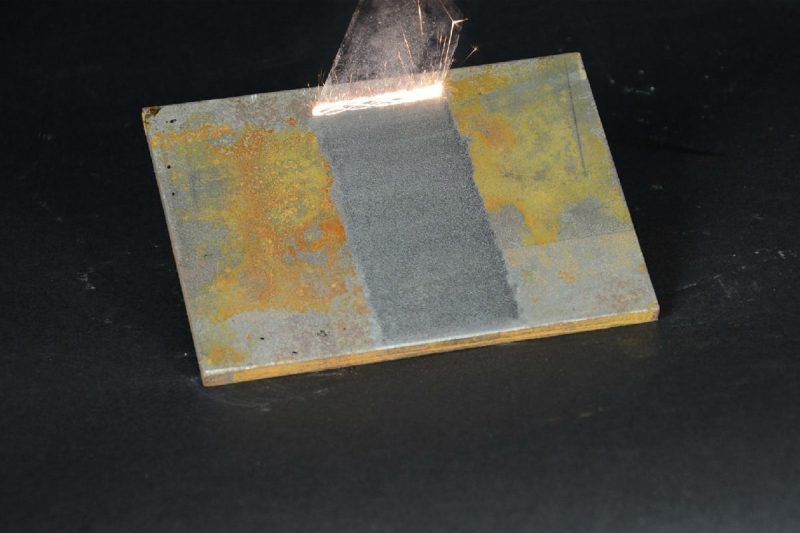
레이저 세척의 주요 이점
의 주요 장점 레이저 청소 다양한 산업용 세척 응용 분야에 새로운 가능성을 제공할 뿐만 아니라 생산 효율성을 개선하고, 환경 영향을 줄이며, 민감한 재료를 보호하는 데 중요한 역할을 합니다. 다음은 핵심적인 장점 중 몇 가지에 대한 자세한 설명입니다.
높은 정확도
레이저 빔의 초점 특성으로 인해 매우 높은 수준의 정밀도를 달성할 수 있습니다. 레이저 세척 시스템은 주변 재료에 영향을 주지 않고 세척을 위해 대상 표면의 매우 작은 영역을 타겟팅할 수 있습니다. 곰팡이 세척, 문화 유물 복원 또는 마이크로 전자 세척과 같이 복잡하거나 섬세한 구조의 오염 물질, 녹 또는 코팅을 제거해야 하는 응용 분야의 경우 레이저 세척은 비파괴 작업을 가능하게 합니다. 이처럼 제어하기 쉬운 정밀도로 인해 엄격한 품질 관리 및 세부 요구 사항이 필요한 산업에 이상적입니다.
높은 세척 효율성
레이저 세척은 고에너지 레이저 빔을 사용하여 기름, 녹, 코팅 및 산화막과 같은 표면 불순물을 빠르게 증발시키고 제거합니다. 매우 짧은 펄스 시간과 고속 스캐닝 기능은 전체 세척 시간을 크게 단축하여 생산 효율성을 향상시킵니다. 샌드블라스팅이나 화학 세척과 같은 기존 세척 방법과 비교할 때 레이저 세척은 더 빠를 뿐만 아니라 품질을 보장하면서 다운타임을 줄여 생산 공정을 크게 최적화합니다.
환경 친화적이고 안전함
레이저 세척 기술은 녹색 및 환경 친화적인 옵션 중 하나로 간주됩니다. 기존의 화학 세척 방법과 달리 레이저 세척은 화학 물질이나 용매를 사용하지 않으므로 유해한 화학 폐기물이 발생하지 않습니다. 작업자나 환경에 2차 오염을 일으키지 않고 레이저 빔을 통해 오염 물질이나 코팅만 제거합니다. 또한 레이저 세척 중에 발생하는 연기나 미립자는 특수 여과 장치로 수거하여 환경에 미치는 영향을 더욱 줄일 수 있습니다. 엄격한 환경 보호 요구 사항이 있는 산업의 경우 레이저 세척은 안전하고 효율적인 대안입니다.
매우 적응력이 좋다
레이저 세척은 특정 유형의 재료에 국한되지 않습니다. 금속, 유리, 석재, 복합 재료, 심지어 플라스틱과 같은 다양한 기질에 적용할 수 있습니다. 이러한 다재다능함으로 인해 항공우주, 자동차 제조, 건물 복원과 같은 산업에서 널리 사용됩니다. 금속 표면에서 녹을 제거하든 유리의 산화막을 세척하든 레이저 세척은 비파괴적인 방식으로 다양한 재료를 처리하고 일관된 세척 결과를 제공할 수 있습니다.
비접촉 프로세스
레이저 세척은 비접촉 공정이므로 세척 과정 중에 대상 표면에 기계적 응력이 가해지지 않아 깨지기 쉬운, 민감한 또는 고가의 재료를 세척하는 데 특히 적합합니다. 예를 들어, 레이저 세척은 문화 유물 및 예술 작품과 같은 민감한 재료를 표면 구조를 손상시키지 않고 세척할 수 있습니다. 또한 산업 장비를 세척할 때 물리적 마찰로 인한 마모를 방지하여 장비의 수명을 연장합니다.
레이저 세척은 정밀성, 효율성, 환경 친화성, 다양성, 비접촉 장점으로 인해 현대 산업 및 기술 세척을 위한 선택 도구가 빠르게 되고 있습니다. 이러한 특징은 다양한 산업의 엄격한 요구 사항을 충족할 뿐만 아니라 지속 가능한 개발과 고품질 생산을 위한 새로운 방법을 제공합니다.
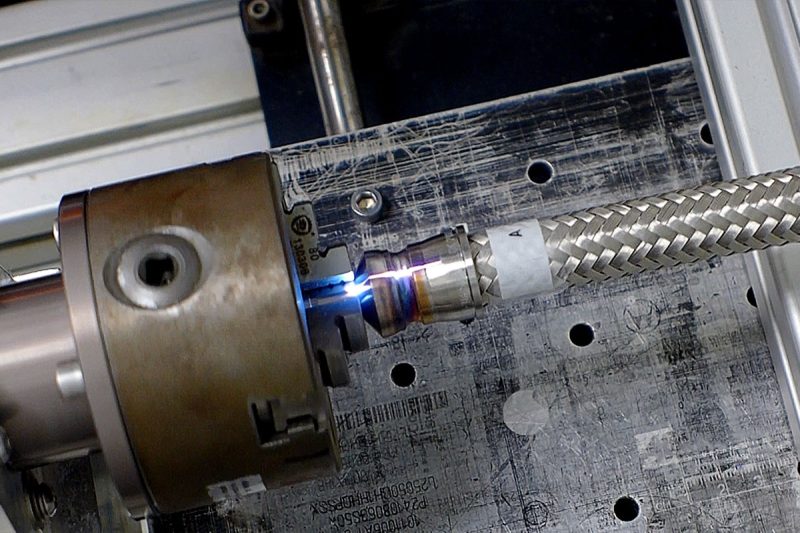
레이저 세척은 민감한 재료를 손상시킬까요?
레이저 세척 기술은 다양한 민감한 재료를 세척할 수 있는 가능성을 제공하지만, 이러한 재료를 취급할 때는 각별한 주의가 필요합니다. 세척 효과와 민감한 재료가 손상될지 여부는 주로 몇 가지 핵심 요소의 조합에 따라 달라집니다.
재료 자체의 특성
민감한 재료의 세척 요구 사항은 먼저 재료 자체의 물리적 및 화학적 특성에 따라 달라집니다. 예를 들어 합성 재료, 플라스틱 및 고무와 같은 열에 민감한 재료는 레이저의 열 축적으로 인해 녹거나 변형되거나 퇴색될 수 있습니다. 동시에 고대 유물, 종이 보관소 또는 섬세한 예술 작품과 같은 역사적 유물도 노화 및 취약한 특성으로 인해 레이저 세척 과정에서 발생하는 열이나 진동의 영향을 받기 쉽습니다. 이러한 재료의 경우 레이저 매개 변수를 매우 정확하게 설정하여 재료 자체를 손상시키지 않고 오염 물질을 제거해야 합니다.
표면 형태의 복잡성
일부 소재는 표면에 매우 복잡한 미세 구조나 조각이 있는데, 정밀 전자 부품의 미크론 스케일 선, 조각된 아트워크 또는 고정밀 기계 부품이 그 예입니다. 이러한 소재의 복잡성은 레이저의 에너지와 펄스에 극도로 민감하다는 것을 의미합니다. 과도한 에너지는 미세 구조의 손상이나 변형을 일으킬 수 있으며, 특히 표면 질감과 기능적 무결성이 필요한 응용 분야에서 그렇습니다. 손상을 방지하려면 레이저 출력, 펄스 지속 시간 및 초점 위치를 신중하게 조정하여 레이저가 기본 소재에 영향을 미치지 않고 오염 물질이나 불순물에만 작용하도록 해야 합니다.
레이저 매개변수의 정밀 제어
레이저 세척의 핵심은 파장, 펄스 지속 시간, 주파수, 레이저 출력을 포함한 매개변수를 정확하게 제어하는 것입니다. 적절한 매개변수 설정은 다양한 재료에 매우 중요합니다. 너무 높은 전력은 재료 표면의 용융 또는 소거를 일으킬 수 있으며, 너무 긴 펄스 지속 시간은 열 축적을 일으켜 재료 구조에 부정적인 영향을 미칠 수 있습니다. 파장의 선택은 재료의 흡수 특성과 밀접한 관련이 있습니다. 재료가 특정 파장의 레이저 광을 너무 강하게 흡수하면 열 손상이 발생할 수 있습니다. 따라서 민감한 재료를 세척할 때 작업자는 실험이나 기술적 수단을 통해 레이저 매개변수를 최적화하여 재료를 손상시키지 않고 오염 물질을 효과적으로 제거할 수 있는 이상적인 설정을 찾아야 합니다.
청소 환경의 영향
레이저 세척의 효과는 작업의 환경 조건과도 밀접한 관련이 있으며, 특히 고정밀 또는 민감한 재료를 세척할 때 그렇습니다. 주변 온도, 습도 및 공기 중의 불순물은 모두 세척 과정에 영향을 미칠 수 있습니다. 예를 들어, 주변 온도가 높으면 재료의 열 팽창이나 열 손상이 심화될 수 있으며, 습도가 너무 높으면 재료 표면의 흡수 특성이 변경될 수 있습니다. 또한, 세척 과정 중의 공기 흐름도 제어하여 레이저에서 발생하는 연기와 입자가 세척 영역을 다시 오염시키지 않도록 해야 합니다.
간단히 말해서, 레이저 세척은 효율적이고 환경 친화적인 세척 기술이지만 민감한 재료를 처리할 때는 재료 특성, 표면 형태, 레이저 매개변수 및 환경 조건을 완전히 분석하고 조정해야 합니다. 적절한 기술적 조치를 채택함으로써 레이저 세척은 재료 무결성을 유지하면서 표면 불순물을 효과적으로 제거하고 이상적인 세척 효과를 제공할 수 있습니다.
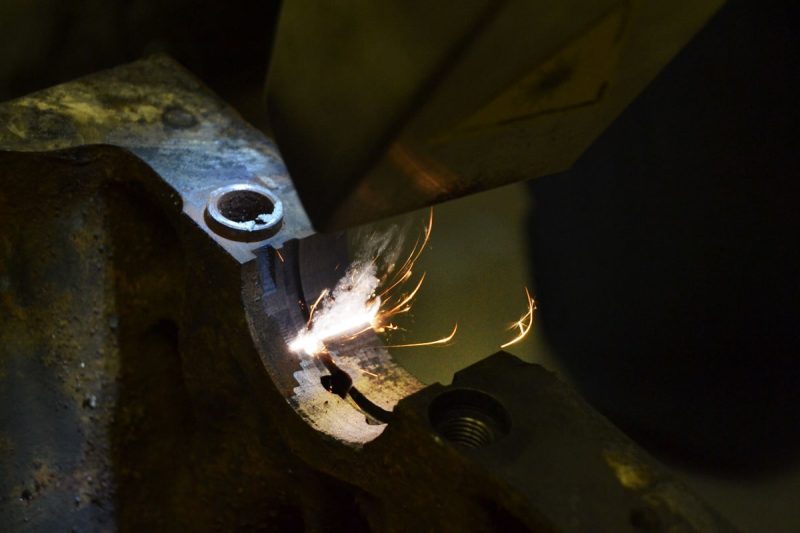
민감한 재료의 적합성에 영향을 미치는 요소
민감한 소재가 레이저 세척에 적합한지 여부를 결정할 때, 여러 요소를 완전히 분석하여 세척하는 동안 소재 자체가 손상되지 않도록 해야 합니다. 다음은 민감한 소재에 대한 레이저 세척의 적합성에 영향을 미치는 몇 가지 주요 요소에 대한 자세한 설명입니다.
재료 구성
재료의 구성은 레이저 에너지에 대한 반응을 직접적으로 결정합니다. 다른 재료는 특정 파장의 레이저 광에 대해 다른 흡수 및 반사 특성을 갖습니다. 예를 들어, 금속 재료는 일반적으로 짧은 파장의 레이저 광에 대한 흡수율이 더 높아 레이저 세척 중에 표면 오염 물질을 쉽게 제거할 수 있습니다. 그러나 플라스틱 및 복합재와 같은 일부 세라믹 및 유기 재료는 레이저 광의 흡수가 약하고 반사가 더 많으며 열에 더 민감할 수 있으므로 레이저 광의 작용으로 변형, 마모 또는 퇴색되기 쉽습니다.
또한 재료의 열팽창 계수와 열전도도 중요한 고려 사항입니다. 열팽창 계수가 큰 재료는 레이저 세척 중 열 응력으로 인해 균열이나 표면 박리가 발생하기 쉬운 반면, 열전도도가 낮은 재료는 레이저 에너지 집중으로 인해 국부 과열을 일으켜 재료 구조를 손상시킬 수 있습니다. 따라서 재료 구성의 특성을 이해하고 레이저 매개변수를 합리적으로 선택하는 것이 레이저 세척이 민감한 재료에 적합한지 확인하는 데 중요합니다.
레이저 매개변수 설정
레이저 세척의 효과와 재료의 적응성은 파장, 펄스 에너지, 주파수, 레이저 지속 시간을 포함한 레이저 매개변수의 설정에 크게 좌우됩니다. 재료마다 파장이 다른 레이저에 대한 흡수 능력이 다릅니다. 예를 들어, 일부 플라스틱이나 유기 재료는 근적외선 레이저를 너무 많이 흡수하여 표면이 손상될 수 있으므로 과열을 방지하기 위해 적절한 레이저 파장을 선택해야 합니다.
또한 펄스 에너지 설정은 특히 신중해야 합니다. 민감한 재료의 경우 펄스 에너지가 너무 높으면 재료 표면에 용융이나 기계적 응력이 축적될 수 있고, 펄스 지속 시간이 너무 길면 열이 축적되어 결국 재료에 열적 손상이 발생할 수 있습니다. 낮은 펄스 주파수는 일반적으로 깨지기 쉽거나 열에 민감한 재료를 세척하는 데 더 적합한데, 각 펄스 후 재료가 열을 발산할 충분한 시간을 갖게 하여 손상 위험을 줄일 수 있기 때문입니다. 따라서 민감한 재료를 처리할 때는 이러한 레이저 매개변수를 정확하게 조정하여 세척 효과와 재료 안전성 간의 균형을 유지하는 것이 중요합니다.
재료 표면 처리 및 상태
재료의 표면 특성은 레이저 세척의 효과와 안전성에 상당한 영향을 미칩니다. 재료 표면에 코팅, 산화물 또는 기타 전처리 층이 있는 경우 레이저 흡수율을 결정하는 데 중요한 요소입니다. 예를 들어, 금속 표면의 산화물 층은 일반적으로 레이저 에너지를 효과적으로 흡수하여 제거하기가 더 쉽습니다. 그러나 코팅이 너무 얇거나 너무 취약하면 레이저 세척으로 인해 기판이 손상될 수 있습니다.
또한 표면의 거칠기도 영향을 미치는 요인입니다. 거친 표면은 레이저 에너지의 불균일한 분포를 유발하여 특정 영역에서 국부적인 과열을 일으킬 수 있습니다. 오염 물질의 유형, 두께 및 균일성도 고려해야 합니다. 다양한 유형의 오염 물질(기름, 녹, 페인트 등)은 레이저에 대한 흡수 특성이 다르며 다른 세척 전략이 필요할 수 있습니다. 민감한 재료가 손상되지 않도록 하려면 표면 상태를 신중하게 분석하고 실제 필요에 따라 세척 매개변수를 조정해야 합니다.
레이저 전달 시스템 및 제어
고정밀 레이저 전송 시스템은 민감한 재료가 오류나 손상 없이 세척되도록 하는 또 다른 핵심 요소입니다. 레이저 빔의 품질, 초점 정확도 및 에너지 분포는 세척 프로세스의 안정성을 보장하기 위해 매우 일관적이어야 합니다. 레이저 빔의 편차, 산란 또는 불균일한 분포는 불균일한 세척 및 재료 손상으로 이어질 수 있습니다.
최신 레이저 세척 시스템은 고급 광 전송 및 제어 기술을 갖추고 있어 세척 과정 중에 레이저 매개변수를 실시간으로 모니터링하고 조정할 수 있습니다. 예를 들어, 피드백 제어 시스템을 통해 작업자는 재료의 표면 온도 또는 반사율 변화에 따라 레이저의 출력 전력을 실시간으로 조정하여 과도한 세척을 방지할 수 있습니다. 또한 자동화 시스템은 다양한 재료의 특성에 따라 사전 프로그래밍하여 각 세척이 안전한 범위 내에서 수행되도록 할 수도 있습니다. 이러한 고정밀 시스템은 세척 과정 중에 민감한 재료가 손상될 위험을 크게 줄입니다.
이러한 핵심 요소를 신중하게 평가함으로써 레이저 세척은 민감한 재료 응용 분야에서 원하는 결과를 달성하는 동시에 재료가 손상되지 않도록 보장할 수 있습니다. 운영자는 효율적이고 안전한 세척 프로세스를 달성하기 위해 각 요소에 따라 적절한 세척 계획을 개발해야 합니다.
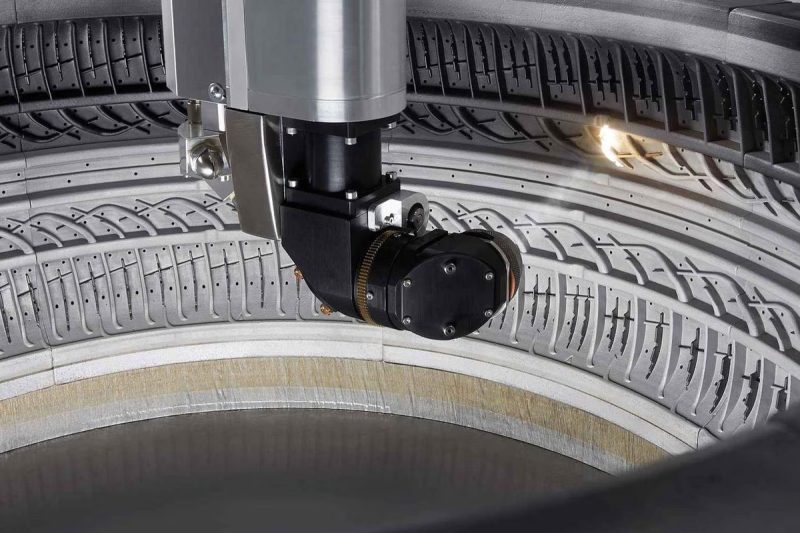
민감한 재료의 레이저 세척
레이저 세척은 민감한 소재를 처리하는 데 있어 높은 정밀도와 유연성으로 인해 많은 산업에서 없어서는 안 될 도구가 되었습니다. 다음은 민감한 소재에서 레이저 세척 기술의 몇 가지 중요한 응용 분야입니다.
예술 복원 및 문화 유산 보호
레이저 세척 기술은 예술품 복원 및 고대 문화 유물 보호에 널리 사용되며, 특히 일부 극도로 민감하고 대체할 수 없는 문화 유물과 예술 작품에 사용됩니다. 이러한 응용 분야에서 기존의 화학적 또는 기계적 세척 방법은 문화 유물 표면에 돌이킬 수 없는 손상을 일으킬 수 있는 반면, 레이저 세척은 비접촉 작동과 조절 가능한 레이저 에너지를 통해 섬세하고 파괴적이지 않은 세척을 달성할 수 있습니다. 예를 들어, 레이저 세척 기술은 조각품, 그림, 벽화 및 건물에서 먼지, 그을음, 석회 또는 기타 산화물 층을 제거하는 데 사용됩니다. 레이저의 파장과 전력을 정밀하게 제어함으로써 세척 공정은 기본 기판을 손상시키지 않고 표적 방식으로 표면 오염 물질을 제거하여 문화 유물의 무결성과 역사적 가치의 보존을 보장할 수 있습니다.
전자 및 반도체 제조
반도체 및 마이크로전자 산업에서 레이저 세척의 정확성은 생산 품질에 매우 중요합니다. 반도체 웨이퍼의 표면은 먼지, 기름 또는 기타 미세한 오염 물질에 매우 취약하여 웨이퍼의 전기적 성능을 방해하거나 심지어 장치 고장을 일으킬 수 있습니다. 레이저 세척 기술은 웨이퍼 표면에서 오염 물질을 제거하기 위한 효율적이고 안전한 솔루션을 제공하며, 이러한 초민감한 재료를 취급하는 데 특히 적합합니다.
펄스 지속 시간, 파장, 전력과 같은 레이저 매개변수를 정밀하게 조정함으로써 작업자는 웨이퍼 표면의 무결성에 영향을 미치지 않고 오염 물질만 제거할 수 있습니다. 동시에 레이저 세척은 화학 시약을 사용할 필요가 없으므로 잔류물이나 액체 부식의 위험을 피할 수 있으며, 매우 높은 청결 요구 사항이 있는 환경에서 작동하기에 적합합니다. 이 비접촉 세척 방법은 반도체 제품의 생산 효율성과 품질을 개선하는 데 중요한 역할을 합니다.
항공우주
항공우주 산업에서 레이저 세척은 항공기 엔진 블레이드, 복합 구조 및 정밀 금속 부품과 같은 핵심 구성 요소를 유지 관리하고 수리하는 데 널리 사용됩니다. 항공우주 장비의 재료는 일반적으로 복잡한 구조와 고성능 요구 사항을 가지고 있기 때문에 레이저 세척은 이상적인 비파괴 유지 관리 도구가 되었습니다.
레이저 세척 기술은 구성 요소의 모양, 크기 또는 재료 특성에 영향을 미치지 않고 구성 요소 표면의 코팅, 부식 및 기타 오염 물질을 효과적으로 제거할 수 있습니다. 엔진 유지 관리에서 세척 프로세스 중 레이저를 정밀하게 제어하면 세척 범위가 대상 영역에 집중되고 처리가 필요 없는 부분으로 퍼지지 않아 구성 요소의 전반적인 성능과 수명을 보장할 수 있습니다. 동시에 레이저 세척의 높은 효율성과 환경 보호 특성은 항공 우주 산업에서 가동 중지 시간과 유지 관리 비용을 줄이는 중요한 수단이 됩니다.
다양한 응용 시나리오에서 레이저 세척에 대한 심층적인 이해와 최적화된 작동을 통해 민감한 재료의 세척 요구 사항을 효과적으로 충족하는 동시에 제품 성능과 외관의 무결성을 보장할 수 있습니다. 이를 통해 레이저 세척 기술은 여러 산업에서 널리 사용되고 생산 효율성과 제품 품질을 개선하기 위한 견고한 지원을 제공합니다.

민감한 소재의 레이저 세척을 위한 모범 사례
민감한 재료를 레이저 세척할 때는 재료에 손상이 발생하지 않도록 일련의 모범 사례를 따르는 것이 중요합니다. 다음은 특히 민감한 재료를 다룰 때 레이저 세척 결과를 최적화하는 데 도움이 되는 구체적인 운영 지침입니다.
재료 평가
레이저 세척을 수행하기 전에 재료의 속성과 특성에 대한 자세한 평가가 필요합니다. 민감한 재료는 종종 특정 열 민감성, 취약성 또는 레이저 에너지에 대한 높은 민감성을 갖습니다. 평가 중에 재료의 구성, 표면 구조, 열 전도도, 팽창 계수 및 레이저 파장에서의 흡수 특성을 고려해야 합니다. 예를 들어, 문화 유물 복원에서 마주칠 수 있는 고대 재료, 복합 재료 또는 고정밀 기기는 레이저 세척에 적합한지 여부와 세척 과정에서 집중해야 할 핵심 사항을 결정하기 위해 엄격한 예비 평가가 필요합니다.
테스트 청소
정식 세척 전에 샘플이나 중요하지 않은 재료 영역에서 테스트 세척을 수행하는 것이 가장 좋습니다. 이 소규모 테스트는 후속 정식 세척에 귀중한 피드백을 제공하여 레이저 매개변수(예: 전력, 주파수 및 파장) 선택이 재료에 손상을 주지 않는지 확인할 수 있습니다. 테스트 세척은 또한 작업자가 세척 과정 중 온도 변화, 오염 물질 제거 효율성 및 재료 반응 정도를 결정하는 데 도움이 될 수 있습니다. 예를 들어, 예술품 복원에서 샘플 테스트는 귀중한 유물에 대한 돌이킬 수 없는 손상을 방지하고 레이저 에너지가 오염 물질에만 작용하고 기판을 손상시키지 않도록 할 수 있습니다.
매개변수 최적화
레이저 세척의 성공은 레이저 매개변수의 정밀한 최적화에 크게 달려 있습니다. 재료의 다양한 특성에 따라 작업자는 레이저 전력, 펄스 주파수, 지속 시간 및 파장과 같은 매개변수를 조정해야 합니다. 열에 민감한 재료의 경우 일반적으로 레이저 전력과 펄스 에너지를 줄여 열 축적을 줄여야 합니다. 동시에 적절한 파장을 선택하면 레이저가 재료 자체를 과열시키지 않고 표면 오염 물질에만 작용합니다. 이러한 매개변수를 점진적으로 조정함으로써 세척 효율과 재료 보호 간의 조화를 이루는 이상적인 균형점을 찾을 수 있습니다. 예를 들어, 반도체 및 전자 산업에서 최적화된 레이저 매개변수는 미세 구조를 손상시키지 않고 작은 표면 입자를 제거할 수 있습니다.
보호 조치를 사용하세요
어떤 경우에는 레이저 매개변수가 최적화되어 있어도 재료가 레이저에 과도하게 노출될 위험이 있습니다. 이러한 위험을 줄이기 위해 재료 표면에 벗겨낼 수 있는 보호 층을 적용하는 것과 같은 추가 보호 조치를 취할 수 있습니다. 이 보호 층은 레이저 세척 프로세스 동안 버퍼 역할을 하여 레이저가 기판에 직접 접촉하는 것을 방지할 수 있으며, 이는 매우 깨지기 쉬운 또는 역사적 유물과 같은 특수 재료를 처리하는 데 특히 적합합니다. 보호 층 외에도 물리적 장벽이나 광학 필터를 사용하여 레이저 범위를 제한하여 민감한 영역을 세척할 위험을 줄일 수 있습니다.
모니터링 및 제어
실시간 모니터링과 정밀 제어는 레이저 세척 중 민감한 재료의 안전을 보장하는 핵심 단계입니다. 첨단 모니터링 장비(적외선 온도 센서, 분광기 등)는 세척 영역의 온도 변화, 반사율 및 에너지 분포를 실시간으로 추적할 수 있습니다. 이러한 데이터는 운영자가 국부 과열 또는 과도한 세척을 피하기 위해 필요한 조정을 하는 데 도움이 될 수 있습니다. 동시에 자동 피드백 제어 시스템은 실시간으로 모니터링되는 변화에 따라 레이저 전력 또는 주파수를 동적으로 조정하여 세척 프로세스가 항상 안전한 범위 내에 있도록 할 수 있습니다. 이 고정밀 모니터링 기술은 항공우주 및 고정밀 제조에 특히 중요합니다.
세척 후 평가
세척이 완료된 후, 재료의 포괄적인 품질 평가는 세척 결과와 재료 안전을 검증하는 중요한 단계입니다. 평가에는 재료 표면의 물리적 및 화학적 분석이 포함되어야 하며, 오염 물질이 완전히 제거되고 가능한 손상이나 변형이 감지되었는지 확인해야 합니다. 전자, 의료 및 미술품 복원과 같은 일부 까다로운 산업의 경우 세척 후 평가에는 미세 검사, 표면 경도 테스트 또는 표면 형태 분석이 포함될 수도 있습니다. 잠재적인 문제가 발견되면 세척 프로세스를 더욱 최적화하여 향후 작업에서 유사한 문제를 피할 수 있습니다.
이러한 모범 사례를 통해 운영자는 민감한 재료를 취급할 때 레이저 세척의 위험을 효과적으로 줄이고 최적의 세척 결과를 보장할 수 있습니다. 정확한 재료 평가, 정밀한 레이저 매개변수 제어, 전체 프로세스 모니터링 및 보호 조치의 적용은 모두 안전하고 효과적인 세척 프로세스를 보장하는 데 중요합니다. 이 체계적인 세척 전략은 세척 효율성을 개선할 뿐만 아니라 재료 무결성과 기능의 보호를 극대화하며 문화 유물 보호, 반도체 제조, 정밀 엔지니어링 및 기타 분야에서 널리 사용됩니다.
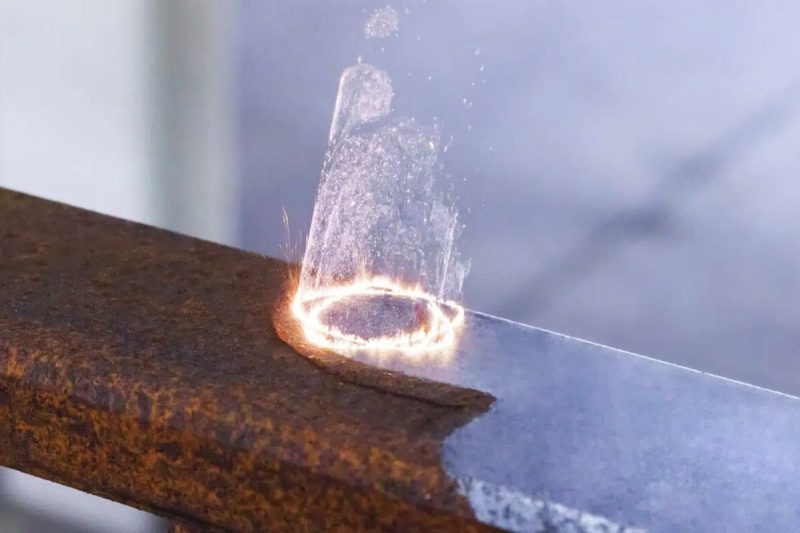
요약하다
레이저 세척 기술은 효율적이고 비접촉 작업 원리로 많은 산업에서 뛰어난 적용 능력을 입증했으며, 특히 민감한 재료 처리에서 매우 정밀한 세척 솔루션을 제공합니다. 이 기술은 문화재 복원, 반도체 제조, 정밀 기계 및 항공우주 분야에서 중요한 역할을 수행하여 오염 물질을 효과적으로 제거할 뿐만 아니라 기존 세척 방법으로 인한 물리적 손상이나 화학적 부식을 최소화합니다.
그러나 레이저 세척이 민감한 재료에 손상을 줄지 여부는 여러 요인에 따라 달라집니다. 첫째, 재료의 특성이 핵심이며 여기에는 구성, 열 감도, 표면 구조, 레이저 에너지의 흡수 및 반사 능력이 포함됩니다. 다른 재료는 세척 과정에서 다른 반응을 보이며 일부 재료는 열 축적이나 기계적 응력으로 인해 손상될 수 있습니다. 따라서 레이저 세척을 선택할 때 재료의 특성을 완전히 분석하고 평가해야 합니다.
둘째, 레이저 매개변수의 선택은 세척 효과와 재료 안전에 매우 중요합니다. 레이저의 파장, 전력, 펄스 주파수 및 작동 시간은 레이저와 재료 간의 상호 작용에 영향을 미칩니다. 민감한 재료의 경우 작업자는 세척 프로세스 동안 균일한 에너지 분포를 보장하고 국부 과열 또는 과도한 세척을 피하기 위해 특정 상황에 따라 이러한 매개변수를 정확하게 조정해야 합니다. 과학적이고 합리적인 매개변수 제어는 표면 오염 물질을 제거하는 동안 재료의 무결성이 영향을 받지 않도록 할 수 있습니다.
작동 환경과 조건은 레이저 세척의 효과를 결정하는 또 다른 핵심 요소입니다. 고정밀 광 전송 시스템, 실시간 모니터링 및 피드백 기술, 보호 조치의 적용은 모두 레이저 세척의 안전성과 효과를 개선하는 데 도움이 됩니다. 전체 세척 프로세스를 모니터링함으로써 작업자는 언제든지 레이저 에너지와 작동 범위를 조정하여 불필요한 손상을 방지할 수 있습니다.
민감한 소재를 세척할 때 안전을 보장하려면 일련의 모범 사례를 따르는 것이 필수적입니다. 포괄적인 소재 평가가 기본이며, 세척을 공식적으로 시작하기 전에 레이저 매개변수를 최적화하기 위해 샘플 테스트 세척을 수행해야 합니다. 또한 필요한 경우 보호 층이나 장벽을 사용하여 레이저가 소재에 미치는 직접적인 영향을 줄일 수 있습니다. 세척 과정에서 고급 모니터링 장비와 제어 시스템은 작동 오류나 에너지 과부하를 효과적으로 방지하여 안전하고 신뢰할 수 있는 세척 과정을 보장할 수 있습니다. 세척이 완료된 후에는 소재에 대한 자세한 품질 평가를 통해 세척 효과를 확인하고 돌이킬 수 없는 손상이 발생하지 않았는지 확인해야 합니다.
간단히 말해서, 과학적 평가와 실습을 통해 레이저 세척 기술은 민감한 재료의 무결성을 유지하면서 이상적인 세척 결과를 제공할 수 있습니다. 이는 레이저 세척을 많은 산업에서 대체할 수 없는 솔루션으로 만들어 작업 효율성을 개선할 뿐만 아니라 재료 손상 위험을 효과적으로 줄입니다.
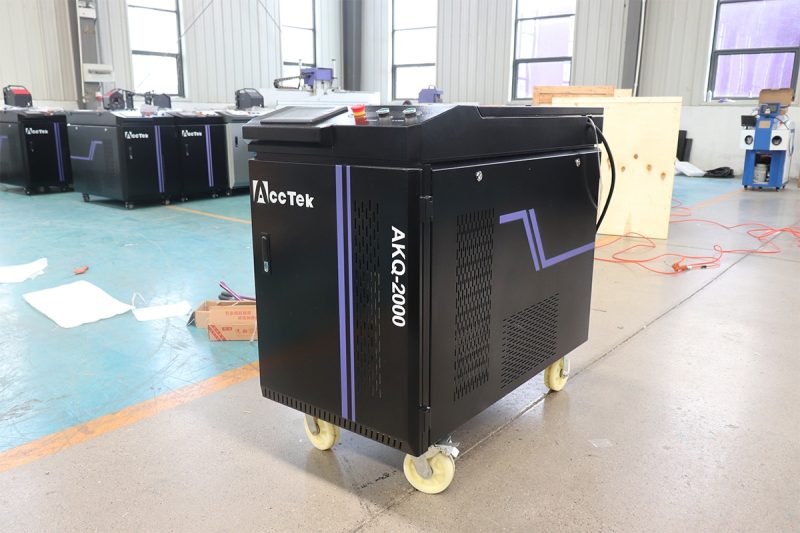
레이저 솔루션 받기
올바른 레이저 세척 장비를 선택하는 것은 세척 결과를 개선하고 재료를 보호하는 데 중요합니다. 신뢰할 수 있는 파트너와 협력하면 고급 기술 지원, 전문 솔루션 및 지속적인 서비스를 받을 수 있습니다. AccTek Laser에서는 모든 유형의 산업용 세척 요구 사항에 맞는 광범위한 레이저 세척 장비를 제공합니다. 당사 전문가는 효율적이고 안전한 세척 결과를 보장하고 생산 효율성을 극대화하기 위해 세척 매개변수를 최적화하는 데 도움을 드립니다. 또한 정밀한 에너지 제어 및 지능형 모니터링 시스템과 같은 고급 기능을 제공하여 세척 프로세스의 안정성과 정확성을 보장합니다. 또한 당사 기술 팀은 포괄적인 지원 서비스를 제공하여 장비가 항상 최적의 작동 상태를 유지하도록 보장합니다. AccTek Laser와 협력하면 효율적이고 비파괴적인 세척 결과를 얻고 운영 위험을 줄이며 생산 품질을 개선할 수 있습니다. 지금 당사에 문의하여 비즈니스 성장에 도움이 되는 혁신적인 세척 솔루션에 대해 자세히 알아보세요.
연락처 정보
- [email protected]
- [email protected]
- +86-19963414011
- No. 3 Zone A, Lunzhen Industrial Zone, Yucheng City, Shandong Province.
레이저 솔루션 받기
